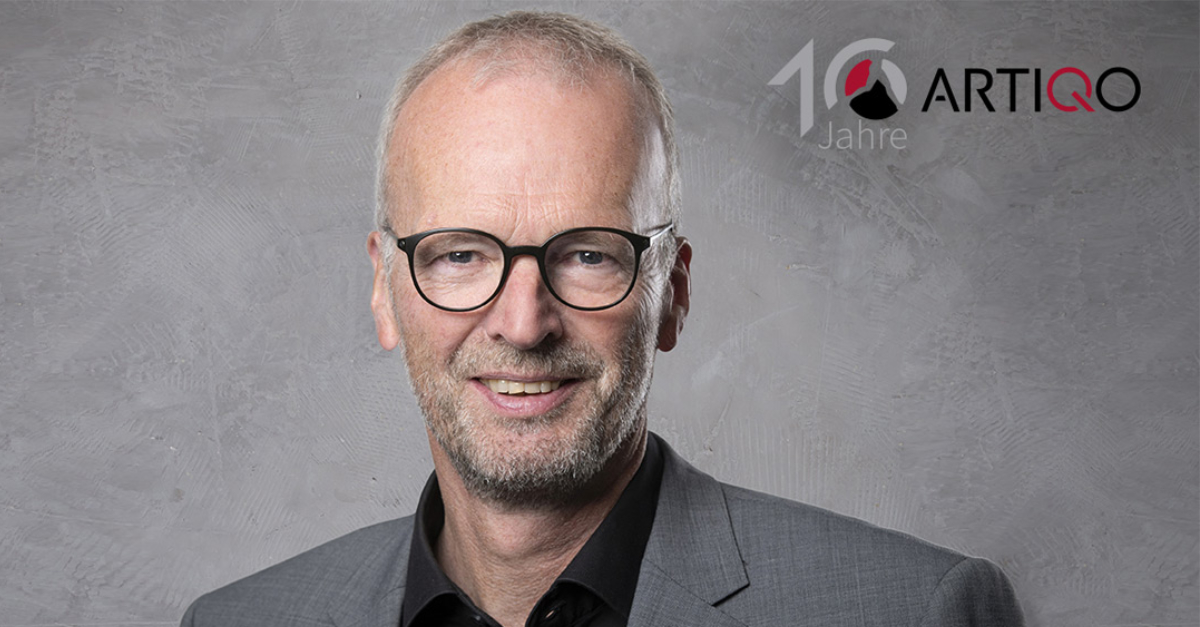
20 Apr Out of the niche with the A2® shaft
Out of the niche with the A2® shaft

The A2® short socket system has been an important part of the company’s development since it was founded 10 years ago. A risky venture, because short stems were still in the supply niche for younger patients at that time. Ulrich Bücken, Managing Director of ARTIQO GmbH, describes in an interview the considerations that led to the development of the A2® system, why he believes in the future of the short socket as a standard fitting and how much the success proves him right.
You once said that the ARTIQO company was born out of the conviction that a company was needed that approached well-known endoprosthetic topics differently. Did you mean the A2® short stem system?
Ulrich Bücken: Our ARTIQO mission statement is “Anatomy as a standard”. For us, this is not an empty phrase, but a living tradition, if one can speak of tradition after 10 years. ARTIQO’s justification has never been “me too”, but rather a consistently anatomical approach to endoprosthetic problems.
When the industry started operating minimally invasively in the early 2000s, the first step was to adapt the instruments and the approaches. The next step was to modify the implants as well. This is how, among other things, short-shaft arthroplasty came about. At ARTIQO, we are also concerned with thinking about arthroplasty anatomically and thus three-dimensionally instead of two-dimensionally. Based on this conviction, we have developed the A2 short stem system.
10 years ago, short-stem supply was still a niche product. Wasn’t it risky at the time to focus on short-shaft development?
Ulrich Bücken: Hip arthroplasty is one of the most successful operations in terms of outcome and error rates. It is difficult to improve things from such a high level. This requires a very high level of detailed understanding based on the endoprosthetic developments of the last decades. Mario Frank and I have both been in the industry since the late 1980s and together we have a lot of experience and expertise in implant development, design and manufacturing as well as in product management and marketing.
The development of the A2 System was an important part of the company’s development. We were convinced that a consistently anatomical short stem system could overcome the limitations of the short stems available until then, significantly expand the range of indications and become an alternative to standard stems.
How did you come to this conviction?
Ulrich Bücken: At the beginning of the 2000s I was still at Plus Orthopedics and was responsible for the development of the Nanos™ socket [1]. Even then, the goal was to minimize bone resection and restore the joint geometry physiologically. At the time, the only model for the implant was the Mayo® short-stem prosthesis [2], which was not really widespread, but achieved excellent results in well-indicated cases.
We meticulously observed the performance of the Nanos socket, analyzed the few clinical studies and exchanged ideas intensively with the users. The field of application of the Nanos socket was limited to younger patients up to 65 years of age. That was the starting point for the development of the A2® short shaft system. In knee arthroplasty we speak of phenotypes. This is also the case in hip arthroplasty. Our question was: How must a short stem system be designed so that it can be used for the greatest possible variety of individual anatomies and femur morphologies? The result in 2015 was a well thought-out and modern A2® short stem system that is very well suited for minimally invasive approaches and can individually reconstruct a wide variety of anatomies. And – like a standard system – it can be integrated very well into the routine operation of a clinic.
In the 2022 annual report of the German endoprosthesis register (EPRD), the A2® short stem has shown outstanding results for the fifth year in a row. Can one say: Success proves you right?
Ulrich Bücken: It is always a pleasure to see how good the register data of the A2® short stem is. With the lowest probability of failure of 2.3% within five years, it is at the forefront of elective cementless primary hip replacement. Both short and standard systems are observed in this reporting segment. This is definitely a confirmation of our development work.
At the same time, we are proud of the acceptance that the A2® short shaft system has today. In the EPRD, the system is one of a total of 58 tracked primary stem systems. Only 11 stem systems have a higher number of traced stems than the A2® stem with its 7,055 restorations. Our system is growing disproportionately compared to established stock systems. This speaks for the value of the system, which is now also attracting attention in other European countries. In the coming year we will start exporting to France.
What outlook would you like to give for the A2® short stem?
Ulrich Bücken: We were convinced from the start that the short shaft segment could become the standard and now we see that the register data proves us right. For the future, we want to cover the range of indications even more broadly. A first step in this direction was the introduction of the cemented variant, with which we can now offer a solution for older patients and a sensible addition to the range for Dorr type C morphologies and for patients with an osteoporotic bone structure. In standard elective care, we already see almost no contraindications. It is now our task to prove with clinical studies that the range of indications can be broadened as with a classic standard system.
[1] Registered trademark of Smith & Nephew
[2] Registered trademark of Zimmer Biomet
